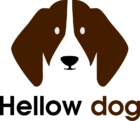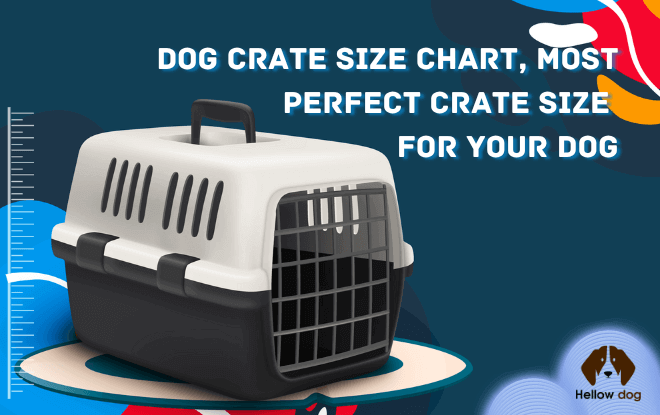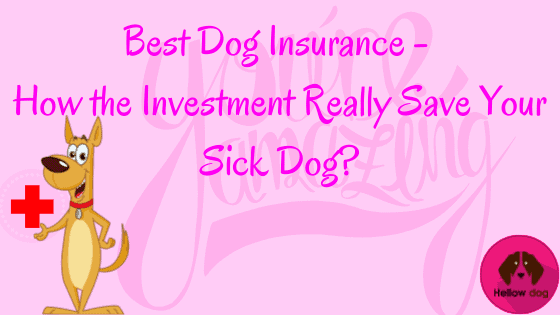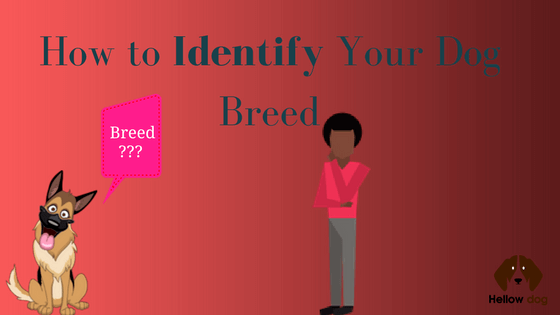There are several things that you need to be concerned about when it comes to taking care of your dogs. One is the kind of food that you’re feeding them. While it might be more convenient to give them anything, a nutritious and balanced diet is vital to keep your dogs healthy.
Just like humans, what your dogs are eating can significantly affect their quality of life. Thus, it is critical for every dog owner like you to be careful about what you should be feeding them. Keep in mind that it takes a lot of care and planning to keep them healthy and active over a long time.
Since there are several ways to feed your dog and tons of diets to choose from, here are some essential points that you might want to consider.
[tcb-script async=”” src=”https://pagead2.googlesyndication.com/pagead/js/adsbygoogle.js”][/tcb-script][tcb-script] (adsbygoogle = window.adsbygoogle || []).push({});[/tcb-script]
The Importance of Dog Nutrition
Unless you fully understand the importance of giving your dog the right nutrition, it would be easier to feed them with what’s only available in your stash. Dogs might just eat whatever you feed them, and they would still get full. However, the quality of their life can be at stake.
Every food your dog eats may contribute to their skin conditions, probability of infections, coat, muscle tone, temperament, and other aspects of their health. In most pets, feeding them with a higher quality of food leads to a longer and healthier life. But besides reducing their risks of health problems resulting from improper nutrition, you can also lower veterinarian bills.
Thus, If you want your dogs to be happier and feel better overall, the first step is to feed them properly. The same with people, your dogs, also need the right amount of nutrients to function and live well.
Know Your Dog’s Nutritional Needs
Nutrients are substances acquired from food. They contain the building blocks and energy components essential for the growth and maintenance of your dog’s life. There are six major classes of nutrients that your dog needs.
It should be noted that your dog’s nutritional requirements will depend on several factors, such as their size, breed, and stage in life. But for a starter, you might have to learn how dogs use each nutrient and the amount of it they need.
Water
As a fundamental need, water makes up 70 to 80 percent of an adult dog’s body weight. A dog can survive even if he loses a lot of his body fat and half of his protein. But he could get seriously ill if he loses 10 percent of his body water and could even die with a water loss of 15 percent.
It is also essential to consider that your dog’s water requirements may vary according to health, activity level, and environmental temperature. Though foods may help meet some of your pet’s needs, make sure that your dog has access to fresh and clean water at all times.
[tcb-script async=”” src=”https://pagead2.googlesyndication.com/pagead/js/adsbygoogle.js”][/tcb-script][tcb-script] (adsbygoogle = window.adsbygoogle || []).push({});[/tcb-script]
Proteins
Proteins are essential to dogs, and they cannot survive without it in their diets. It contains amino acids that dogs cannot produce on their own. Since amino acids are the building blocks of cell growth, maintenance, and repair, dogs need a constant dietary supply of proteins.
Dogs are known to prefer foods that are rich in protein selectively. They can tell when their food misses a single amino acid and are more likely to avoid such a meal. You can get these proteins from animal and plant-based sources like lean meat, fish, eggs, beans, and lentils.
Fats
As the most concentrated form of food energy, fats can provide your dog with more than twice the energy of proteins or carbohydrates. Aside from enhancing the taste and texture of the dog’s food, fats supply fatty acids that play a vital role in maintaining normal, healthy cells.
If you want to keep your dog’s skin and coat healthy, you need to supply them with enough essential fatty acids. These dietary fats can be obtained from animal fats and seed oils of various plants.
Vitamins
Vitamins are organic substances that play a role in your dog’s metabolic activities and boosting immunity. With a balanced diet containing organ and muscle meats and dog-friendly plant-based foods, your dog can get all the vitamins it needs.
It is essential to note that though dogs require vitamins in their food, it is at low concentrations. There are daily recommended allowances for vitamins, depending on your dog’s weight and needs.
Minerals
Although minerals make up less than 1 percent of your dog’s weight, they are crucial to several bodily functions, such as growth, healthy feet, and strong bones. But too much or too little of it can have detrimental effects on your dogs.
For instance, deficiency of dietary calcium can cause hyperparathyroidism, while an excess of it may result in skeletal abnormalities. It is important to monitor your dog’s mineral intake to get its optimal benefits.
Carbohydrates
Though carbohydrates are the only nutrient class that is not essential for dogs, they can also be a good source of essential vitamins, minerals, antioxidants, and other beneficial nutrients. Food rich in healthy carbohydrates can help keep your dog’s intestines healthy.
Food Choices To Consider
Generally, there are two schools of thought that you can look into in terms of selecting a healthy diet for your dog. It can boil down to either home-prepared or commercially available. Each category contains a variety of feeding options.
To come up with which option is better for your dog, you might need to do some research and a consultation with your veterinarian.
- Home-Prepared Diets
Home-preparing your pet’s meals can be time-consuming and can involve some risks, such as infections. Keep in mind that home-prepared diets aren’t simply mixing up some rice and a bit of mince. If you choose a home-made diet for your dogs, you need to put extra effort into learning about their nutritional needs.
Within home-prepared diets, you can opt for home cooking and raw feeding. Though both can be costly compared to commercial food, advocates of this diet might argue that its quality nutrition results help them save in the long run as it can reduce medical bills.
It might be worth noting that home diets are usually recommended if your dog has sensitive skin or gastrointestinal problems. You need to research before preparing a home-made diet as it can be dangerous for your dogs if they are done improperly.
- Commercial Dog Diets
If you don’t have the time and resources to prepare a home-made diet for your dogs, you can rely on a packaged product. You can have a wide range of options, from dry kibble to wet dog food.
Ideally, try looking for a product that has been scientifically designed to meet the nutritional needs of your pets for each stage of life. It’s essential to read the ingredients and contents of the pet food you are buying.
Many veterinarians encourage the feeding of commercial food for dogs than home-prepared diets. But a lot of people are hesitant because they believe that premium commercial dog foods are too expensive and not worth their money.
[tcb-script async=”” src=”https://pagead2.googlesyndication.com/pagead/js/adsbygoogle.js”][/tcb-script][tcb-script] (adsbygoogle = window.adsbygoogle || []).push({});[/tcb-script]
Different Categories Of Dog Food
Besides nutritional needs, you also need to understand pet food labels so you can get the healthiest one for your dogs. The American Association of Feed Control Officials (AAFCO) has nutritional standards for dog food to be marketed as complete and balanced that are based upon a dog’s life stage.
They have recognized three categories for pet food, which is one of the things you should look for at the label to ensure that your dogs get the right nutrition.

Growth/Reproduction
If you see this label on pet food, it means that the food is designed for puppies or growing dogs generally less than a year old. A pet food formulated for growth and reproduction is also for pregnant or lactating female dogs.
Adult Maintenance
On the other hand, adult maintenance is formulated to meet the nutritional needs of dogs that have finished growing but still need to maintain a healthy weight and optimal health. They are considered adult dogs that are generally one year or older.
All Life Stages
Pet food labeled for all stages means that it meets both growth, reproduction, and adult maintenance. It is designed for adult, young, and pregnant or nursing dogs. It also usually means that the food is higher in calories, calcium, and phosphorus.
It might be more beneficial for pet owners to be canny at understanding these packaging claims and opt for reliable pet food brands.
Understand Feeding Practices
How much you’re feeding your dog is as important as what you’re feeding them. Thus, you should not take feeding practices lightly because they can somehow affect your dog’s quality of life.
Since dogs came from omnivores, they are not strict meat-eaters. Though many of them prefer protein from animal sources, dogs can also grow well on a diet with vegetables. But whether the protein is animal-based or plant-based, average adult dogs would need at least 10 percent of their total calories from protein. Older dogs might need as much as 50 percent more.
Dogs need to have access to water at all times to reduce the risk of becoming overheated. Their need for water may increase as they expend more energy, such as during exercise. Their water intake may also double if they are in warm conditions.
If you’re feeding your dog with commercial diets, you can follow the suggested amount that fits its ideal weight. But to be sure, you can ask your veterinarian to calculate the exact amount of food to feed.
A feeding schedule is essential, as well. Though you can feed your dog one or two times a day, it may vary based on your dog’s weight and health conditions. For dogs with a healthy weight, you can utilize the free-choice feeding method. But you can use the portion control method for dogs who would never stop eating.
[tcb-script async=”” src=”https://pagead2.googlesyndication.com/pagead/js/adsbygoogle.js”][/tcb-script][tcb-script] (adsbygoogle = window.adsbygoogle || []).push({});[/tcb-script]
The Healthiest Food Option For Your Dog
There is a wide range of high-quality foods available in the market. However, finding the healthiest dog food depends on several factors. The first essential thing you can do as a pet owner is to read the label and choose the highest quality food you can afford.
By doing this, you may not be able to feed the very best food, but you can get away from preservatives, chemicals, and contents that may not be good for your dog. However, it’s always vital to consult with your veterinarian, especially if your dog has special health issues. They know better the right amount of food and a mixture of nutrients needed in your dog’s diet.
Takeaway
Maintaining a healthy diet for your dog requires deliberate effort, commitment, and research. While it can be more tempting to take your pet’s food for granted, knowing its direct impact on your dog’s health can also be motivating. After all, you would want to increase your dog’s lifespan and quality of life as much as you can.
You May Also Like
[tcb-script async=”” src=”https://pagead2.googlesyndication.com/pagead/js/adsbygoogle.js”][/tcb-script][tcb-script] (adsbygoogle = window.adsbygoogle || []).push({});[/tcb-script]







